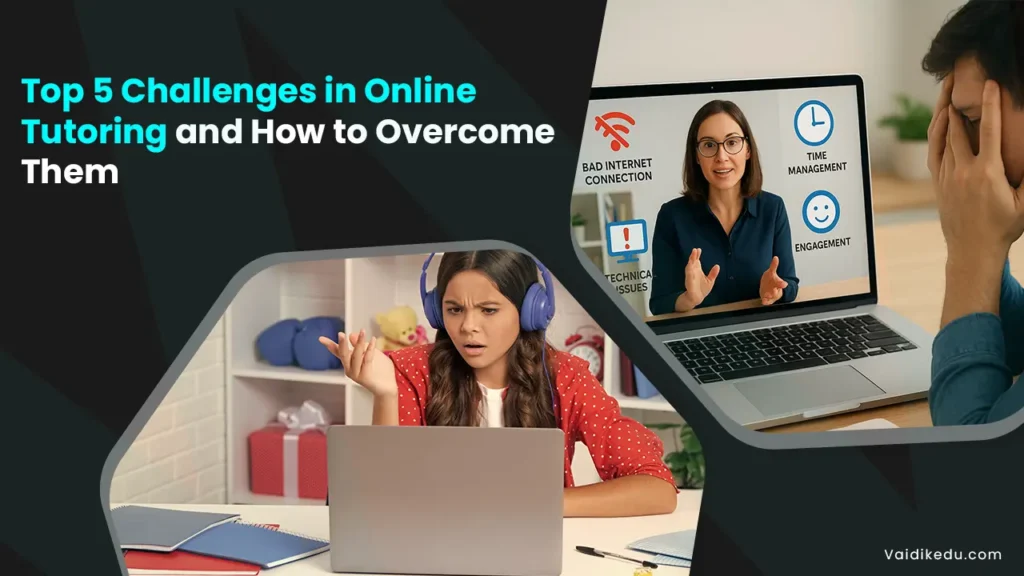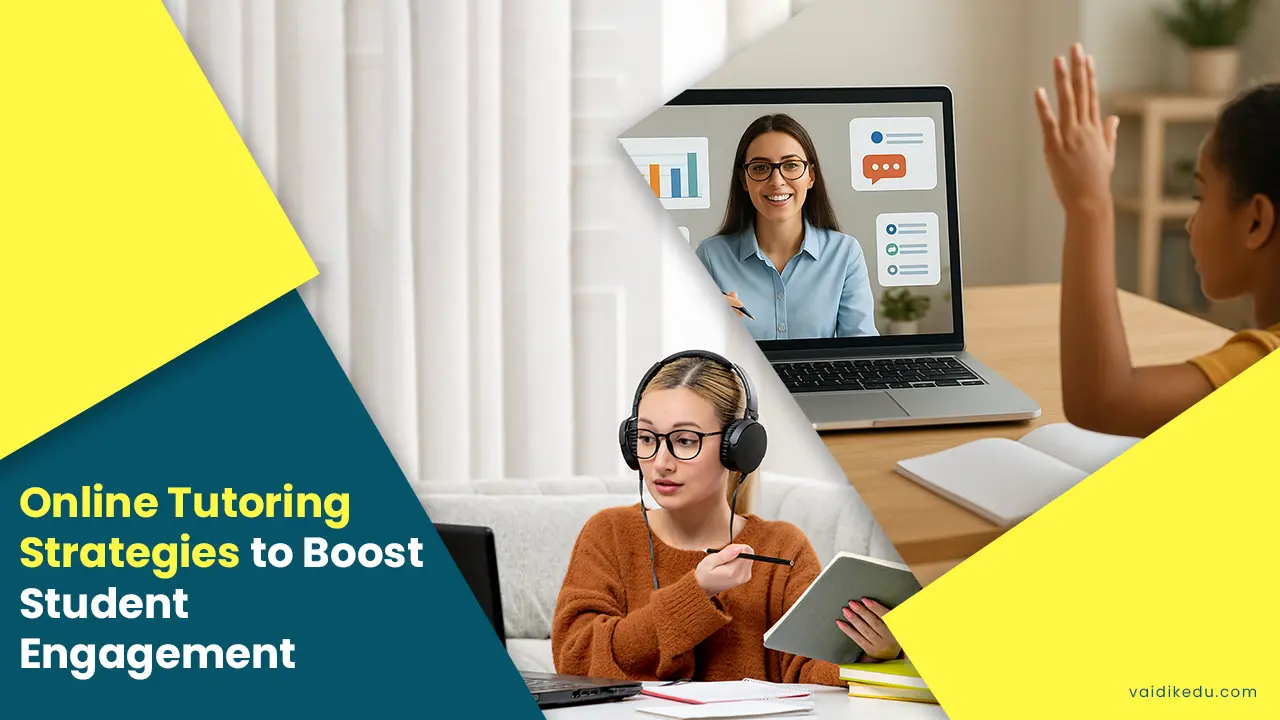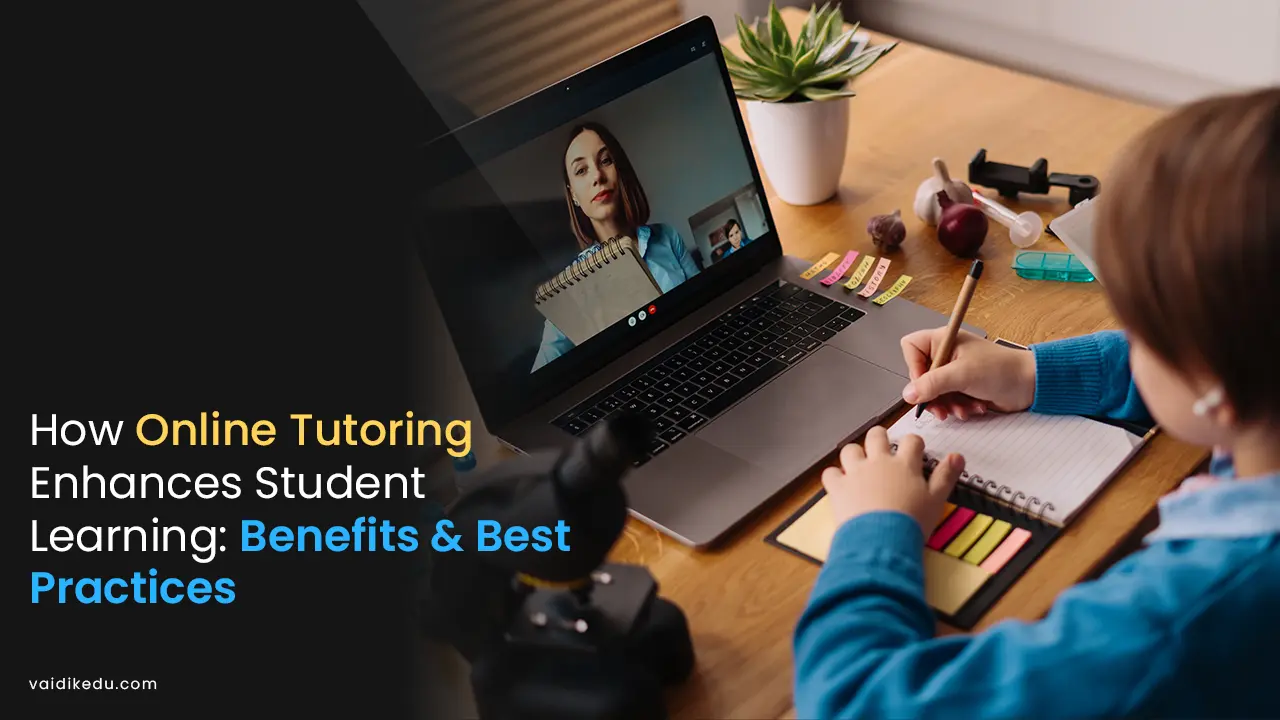Ever since the pandemic, online tutoring has seen an exponential growth. This way of teaching offers students access to quality educators from around the globe like never before.
However, as convenient and flexible as it may be, online tutoring has its own share of challenges that both students and tutors face. In this article,
Top 5 Challenges in Online Tutoring And Also Look At The Possible Solutions.
1. Technical Issues
These are the first and most common obstacles experienced in online tutoring. Poor internet connections, old and slow hardware, incompatible software, and platform glitches are all included in these. These challenges not only hinder online tutoring but also break the flow of teaching.
A lot of valuable time is wasted in fixing these issues during a live class. These issues may also cause frustration in students and tutors, leading to a less effective learning environment.
What Are The Solutions?
- Invest in Reliable Technology: Invest in a quality setup, such as high-speed internet, modern computers, and quality peripherals such as webcams and microphones. A stable connection is required for maintaining an uninterrupted class.
- Backup Plans: If the platform that you generally use to conduct sessions fails, then it is recommended that you have a backup or alternative platform ready. There are several platforms, such as Google Meet, Zoom, or other video conferencing platforms which you can use as a temporary solution.
- Pre-Session Checks: It is always a good practice to conduct quick technical checks before you start your session. In case, there’s a glitch you can check if it can be resolved quickly or find an alternative so you do not have to disrupt your session.
- Technical Support Training: If you are new or not familiar with tech, then it is recommended to learn to troubleshoot common issues to instantly address problems during live sessions. You can also create a troubleshooting guide for students.
2. Engagement And Interaction
Maintaining student engagement in an online class is challenging. Without a physical presence, students may not be involved completely. Students may get distracted easily, reducing participation and a lack of interest in the subject.
What are the solutions:
- Interactive Tools: To increase participation by using online whiteboards, pills, and quizzes to make lessons more dynamic. Tools like Mentimeter and Google Jamboard can encourage active participation.
- Breaks And Activities: Include short breaks and interactive activities to retain attention. These can help in learning effectively, especially during long sessions.
- Gamification: Integrate gamified elements, such as leaderboards, badges, or rewards, to make learning enjoyable and competitive.
- Personalized Learning: Tailor sessions to individual interests and learning styles. For example, if a student loves sports, incorporate sports-related examples in math or science lessons.
- Use Visual Aids: Incorporate videos, infographics, and animations to explain complex concepts and keep students visually engaged.
3. Building Rapport
The Challenge:
Establishing trust and rapport is harder in a virtual setting, especially when tutors and students may never meet in person. A lack of connection can make students reluctant to ask questions or engage fully, which can negatively impact their learning outcomes.
How to Overcome:
- Regular Communication: Begin sessions with casual conversations to create a friendly atmosphere. This helps students feel comfortable and valued.
- Show Empathy: Be patient and understanding of students’ challenges, both academic and personal. Acknowledge their efforts and struggles to build a supportive environment.
- Active Listening: Pay close attention to students’ concerns and provide constructive feedback. Make them feel heard and appreciated.
- Consistency: Regularly scheduled sessions help build familiarity and comfort. Maintaining a predictable schedule also fosters trust.
- Encourage Feedback: Ask students for feedback on your teaching methods and adjust accordingly to improve their experience.
4. Time Management
The Challenge:
Both tutors and students may struggle with managing time effectively during online sessions. Sessions may overrun, leaving no time for questions, or end too early, wasting valuable teaching opportunities. Poor time management can lead to incomplete lesson delivery and reduced effectiveness.
How To Overcome:
- Structured Lesson Plans: Prepare a detailed lesson plan with time allocations for each segment. For example, allocate 10 minutes for a recap, 30 minutes for new concepts, and 10 minutes for a Q&A session.
- Set Clear Expectations: Begin each session by outlining goals and expected outcomes. Share a session agenda with students beforehand.
- Use Timers: Keep track of time with alarms or countdowns to ensure sessions stay on track. This also helps students stay aware of time constraints.
- Follow Up: Provide additional resources or homework to cover topics that could not be addressed during the session. Use follow-up emails or messages to ensure continuity.
- Monitor Progress: Regularly review your time management strategies and adjust as needed to optimize efficiency.
5. Lack of Student Accountability
The Challenge:
Without the physical presence of a teacher, some students may procrastinate, skip assignments, or not take online sessions seriously. This lack of accountability can lead to poor performance and hinder their overall learning progress.
How To Overcome:
- Set Clear Goals: Work with students to set achievable short- and long-term goals. Break larger tasks into smaller, manageable steps.
- Frequent Assessments: Use quizzes, assignments, and reviews to monitor progress. Regular assessments help identify areas for improvement and keep students on track.
- Parental Involvement: Keep parents informed about their child’s progress and encourage their participation in the learning process. Share progress reports and suggest ways they can support their child.
- Motivational Strategies: Recognize and reward achievements to keep students motivated and accountable. Rewards can be as simple as verbal praise or certificates of achievement.
- Self-Reflection: Encourage students to reflect on their own learning progress and identify areas they want to improve.
Additional Tips For Successful Online Tutoring
- Create A Dedicated Learning Space: Encourage students to set up a quiet, distraction-free environment for online sessions. A designated learning space can improve focus and productivity.
- Leverage Analytics: Many online tutoring platforms offer analytics to track student performance. Use this data to tailor your teaching approach.
- Stay Updated: Continuously learn about new tools, techniques, and trends in online education to enhance your teaching skills.
- Foster Collaboration: Encourage group activities or peer learning sessions to enhance interaction and teamwork among students.
Conclusion
Online tutoring presents unique challenges, but with the right strategies, these obstacles can be effectively addressed. By investing in technology, fostering engagement, building rapport, managing time wisely, and encouraging accountability, tutors can create a productive and enjoyable learning environment for their students.
Additionally, by staying adaptable and open to feedback, tutors can continuously improve their approach to meet the evolving needs of online learners. As the online education space continues to grow, overcoming these challenges will be key to ensuring success for both tutors and students.
Frequently Asked Questions
Look for platforms that are user-friendly, offer interactive tools, provide good technical support, and align with your teaching needs. Trial sessions can help you evaluate different platforms.
Engage the student with personalized content, interactive tools, and open-ended questions. Building rapport and understanding their interests can also help increase participation.
Discuss the importance of reliable technology with the student or their parents. Provide them with a list of technical requirements and suggest affordable upgrades if needed. Offer to record sessions for later review if live participation is challenging.
Yes, with the right tools and creativity. Use virtual labs, simulations, or step-by-step video demonstrations to teach practical concepts effectively. Platforms like Labster or Phet Simulations can be helpful.
Set clear deadlines, send reminders, and break assignments into smaller tasks. Regular check-ins and positive reinforcement can also encourage timely submission. Use tools like Google Classroom or Trello to organize and track assignments.









